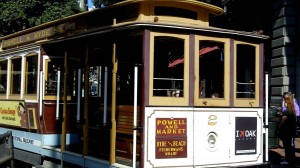Overcoming barriers to new cancer drug development
San Francisco – “Translational research is the key to successful drug development” according to William N. Hait MD, PhD, global therapeutic area head of oncology, Johnson & Johnson.
 Hait presented a plenary session on “overcoming barriers to new drug development” at the recent AACR-NCI-EORTC Molecular Targets and Cancer Therapeutics International Conference in San Francisco.
Hait presented a plenary session on “overcoming barriers to new drug development” at the recent AACR-NCI-EORTC Molecular Targets and Cancer Therapeutics International Conference in San Francisco.
How do we define translational research?
The definition Hait most likes is from Duke Ellington: “if it sounds good, it is good”
The challenge of drug development is that with rare exceptions the process is slow, inefficient and expensive.
Hait outlined several challenges to translational research, including:
- Complexity – imagine blocking the traffic in mid-town manhattan. If you blocked one cross-town route, traffic would slow and then find another route.
This in my opinion is a good visual metaphor for the cross-talk that occurs in cancer. Block one target, and the cancer finds another route. This highlights the need for combination therapy.
“rational combinations of targeted agents may require studying two or more unapproved agents” said Hait.
Novel-novel combinations are something that many companies are nervous about, but if there is a solid scientific rationale then this is something I think we will see more companies doing.
For further insight into how academia is facilitating this type of combination trials, I recommend Sally Church’s interview on Pharma Strategy Blog with Gordon Mills at ECCO/ESMO in Stockholm.
- Inaccuracy of preclinical models – our models don’t always predict preclinically what activity a drug will have in the clinic.
- Efficacy of Clinical Trial Recruitment – need to have alignment of incentives. 20% of US patients are eligible for clinical trials, but only 3% participate.
- Developing Biomarkers. Difficult to obtain serial biopsies for oncology biomarker analysis. Circulating tumor cells may be future, but current instruments can only capture and enumerate and offer limited characterization. According to Hait, the next–generation platform will be exciting. It will allow third parties to offer additional functionality that can be integrated with the platform.
- Drug resistance – a nemesis that just doesn’t want to go away.
- Overcoming the Regulatory Environment – challenges include: scientific complexity, endpoint consistency, global harmonization, companion diagnostic tests, proper comparators, equipoise.
In spite of this complexity, Hait noted the FDA approved 34 new drugs in 2011. Several cancer drugs had a short time from submission to approval and met their PDUFA target date. “These are incredible accomplishments,” he said.
- Market Access – Hait asked the audience: “Would you buy a Porsche 911 that only works for 20% of the people, but we don’t know if you are one of the 20%?” Healthcare authorities need to decide cost/benefit of drugs, and regulatory approval does not automatically mean a new product will be reimbursed. There may be need for future trials with health comparators, or innovative agreements where the healthcare authority only pays for those patients who respond.
- Workforce – academic physicians may end up being segmented into three groups: master clinicians, clinical investigators, physician-scientists. This may provide better career development than the current system.
Hait offered a few suggestions for improvement:
- Move to phenotypic screening rather than target-based screening. In vivo shRNA screening was discussed.
- Disease based drug discovery teams – the hope is that in-depth focused teams will predict better results.
- More intense academic-industry collaboration with a focus on complementary expertise.
The limitation of this plenary presentation was that it only offered the perspective of one senior industry professional. I would have welcomed a balance of views on the barriers to new cancer drug development, and more focused take-home solutions.
If you want to hear more on this topic, AACR have a free podcast that you can download of an interview they did with Dr Hait at the Molecular Targets meeting.
One Response to “Overcoming barriers to new cancer drug development”
Hi,
Very nice summary of the talk (especially since I couldn’t be there in person!).
One note regarding novel-novel combinations: although I am in industry, this approach makes me nervous, too. There are just too many variables, and I simply cannot see how ít is possible to justify giving a patient such a combination if you can’t at least show some single-agent efficacy in the first place (the conservative argument, I admit), in particular using targeted therapies that are very specific against a single target about which not much is known clinically (the definition of “novel” in this case, I suppose).
Perhaps it would be better to “bootstrap” with a novel molecule that has a rationale for working with an established one first, to overcome the hurdle of needing to show monotherapy efficacy? This makes more sense to me, i.e. using a biomarker to select a novel compound that can piggyback on a proven one, especially if the novel molecule involves blocking a resistance pathway.
Comments are closed.